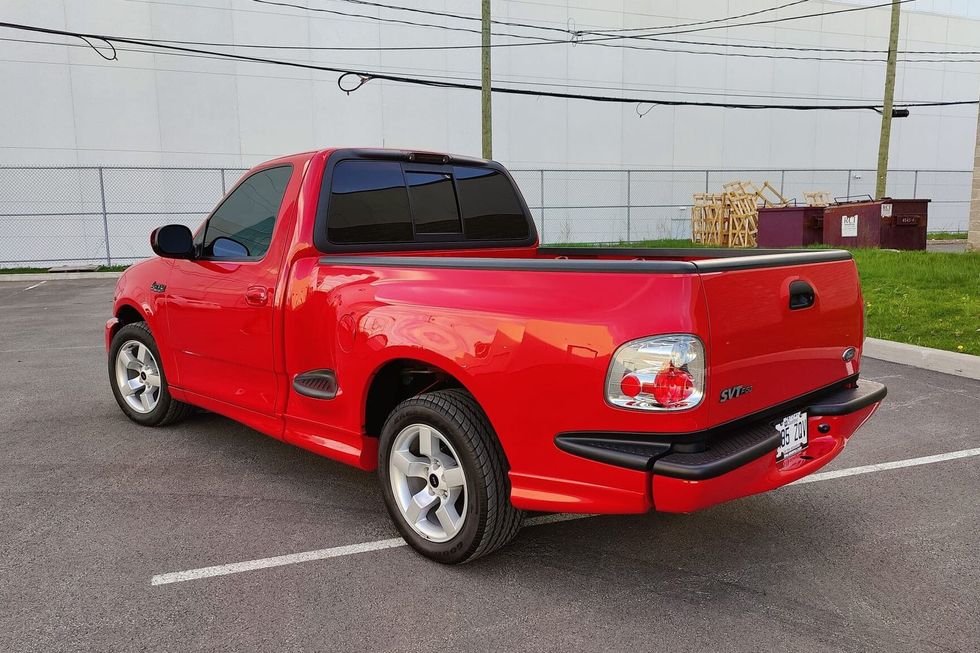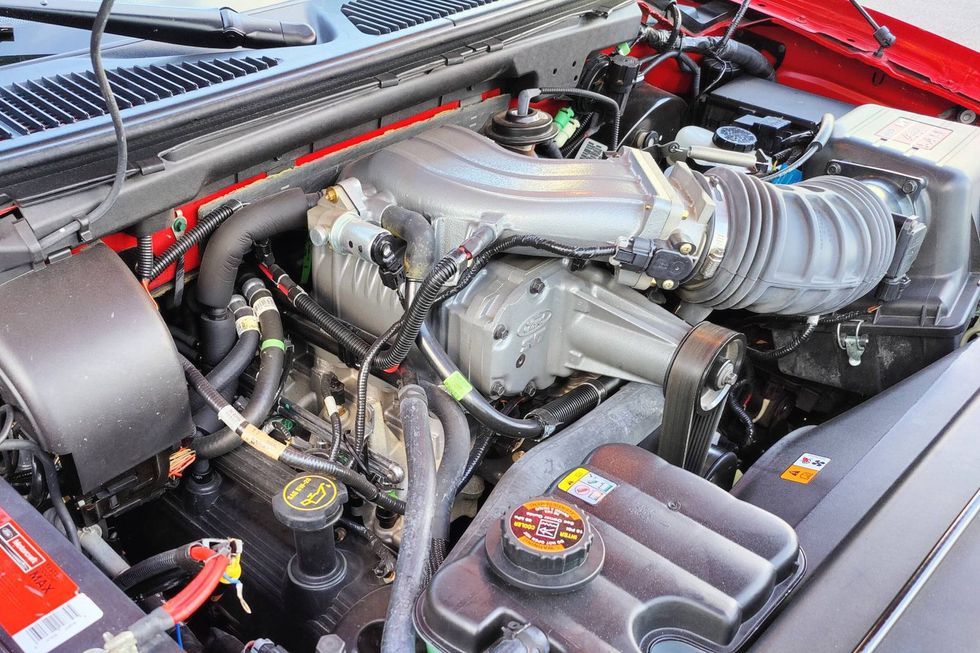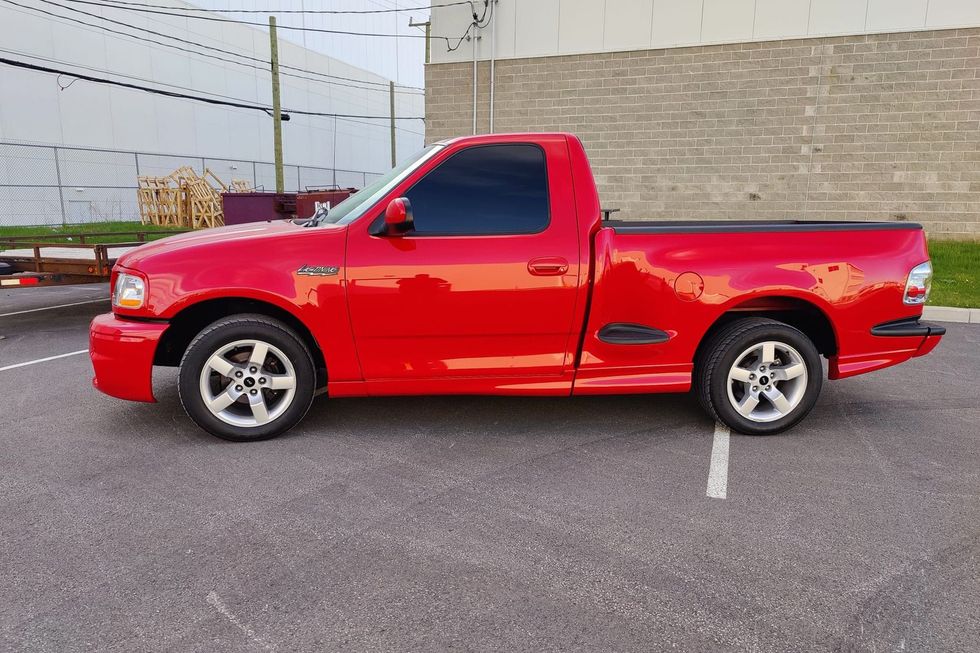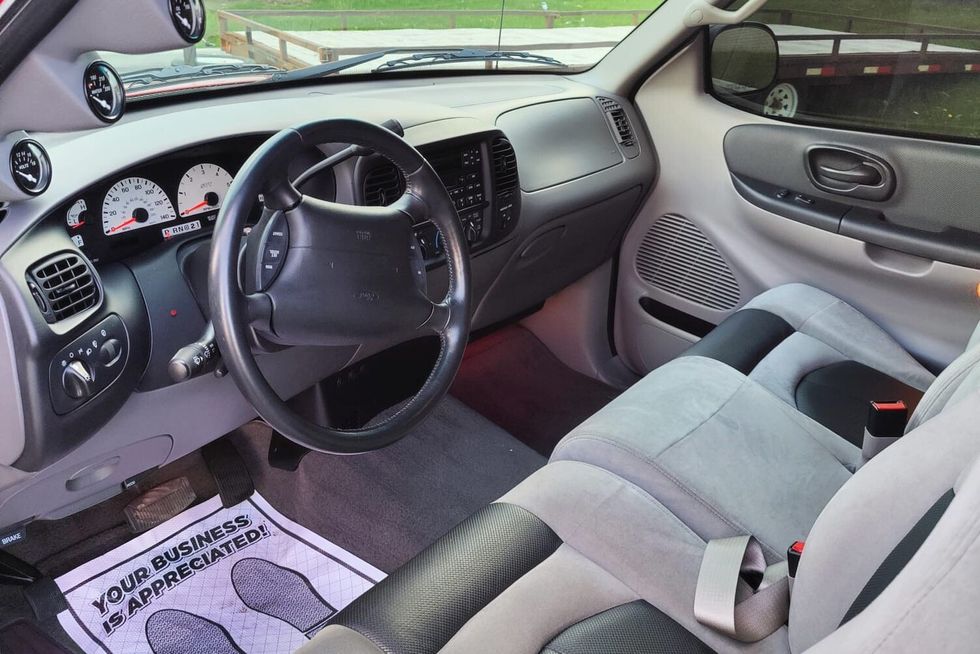Buy
Resources
Entertainment
Magazine
Community
In This Article
Category:
Classics
The chronicles of automotive lore are filled with stories of secret, ultra-special automobiles being developed by troubled companies in a last-ditch attempt to stave off bankruptcy. Generally, these so-called Cars That Might Have Saved The Company either never made it to production or were developed too late to save anything. In many cases, the unseen autos ended up being canceled by the automaker because they didn't fit the product program, or were deemed impossible to bring to market because the company couldn't afford the tooling needed to produce them. Still others were merely variations that didn't make it to production, although similar models did.
What we have here are a bunch of Nash automobiles that, as pretty as they are, never quite made it to production. We'll leave it to you to judge whether or not these Nashes You Never Knew should have been produced, or if they would have made a difference in the Nash brand's fate.
One of my favorites (and the car that most Nash aficionados would tell you at a glance that the color photograph accompanying this story shows) is a 1956 Nash Statesman Country Club two-door hardtop, a very pretty car in Custom trim, though probably not a particularly rare sight. That's exactly what I thought to myself the first time I spotted this photo amongst a pile of literature being offered for sale. Then, however, I remembered a rather important bit of information: Nash didn't offer a Statesman Country Club hardtop in 1956. As a matter of fact, by 1956 Nash had condensed the Statesman lineup down to just a single four-door sedan offered in Super trim. That was all-no Customs and no two-doors. So if Nash didn't produce a two-door Statesman Custom for 1956, what could this thing be?
A closer inspection of the photo revealed three very notable features:
1) The car wears a V-8 badge, despite the fact that the Statesman series never offered an eight-cylinder engine;
2) If you look closely you'll notice there isn't any interior trim-just bare, unpainted metal!
3) The large turn signal housings set into the front fenders are different side to side. The passenger sidelamp looks like the production model, while the driver's sidelamp is unlike anything I've ever seen on a Nash. Hmmm.
So what the photo really shows, then, is either a mock-up of a V-8-powered Statesman Country Club, or a mock-up of what became the mid-1956 Nash Ambassador Special, a line of Ambassadors built on the shorter Statesman wheelbase and powered by the new AMC 250-cu.in. V-8. A photo of the rear of this interesting car, which appears above, shows some additional details. Notice the V-8 badge located in the side molding where it dips down. The taillamps look slightly different from production too.
We also have another black-and-white photo that shows a completely different 1956 (or possibly 1955) Statesman Country Club V8. This one appears to have unique rear fenders, although that may only be an illusion created by the lack of the large chrome molding that usually follows the character line. However, the hooded taillamps and separate back-up lamp housings are unique and didn't appear in production. Notice that it has a three-piece rear window, unlike the one-piece glass that appears on 1956 production cars. Also unique is the two-tone paint scheme. We sure wish we had a color photograph of this car!
Next up is a wild front-end drawing by Italian designer Pinin Farina, who was under contract to Nash (and later American Motors) beginning in 1950. Farina himself gave this photo, shown at the top of the next page, to a Nash designer who was helping him, and that designer gave it to us. Upon inspection, we see that Nash's trademark enclosed wheels are evident, but other than that, this concept bears little resemblance to any Nash production car. Still, the look is low and powerful, and very continental. We wonder: Would Nash management ever have approved it for production?
Appearing a bit earlier, chronologically speaking, are the two photos on the lower left corner of this page. These were found in a large three-ring binder with the name Nash Styling embossed in gold on its maroon cover. The photo of a two-door Nash appears to be a rendering of a proposal for the 1952 or 1953 senior cars. Judging by the short distance between the door and the front wheel opening, this particular car appears to be a Statesman, though the short-wheelbase Statesman and longer Ambassadors of this era generally used the same exterior trim. The bright band that surrounds the door glass and highlights the recessed door notch is quite attractive and it goes well with the thick chrome molding that runs along the lower body from front to rear. Below it we see essentially the same design (though it's a four-door sedan rather than a hardtop) but with the bright chrome band removed and the rear window trim toned down considerably. Indications are that these were done around the same time, leaving us to wonder: Was Nash considering limiting the brighter trim for use only on hardtop models, with the more conservative trim reserved for the four-doors?
The grille proposal for the 1954 Nash senior cars is a previously unpublished photo. This design featured a large recessed-type grille and painted headlamp rings somewhat similar to the 1954 models, but with a low-mounted grille badge and close-set bumper guards. Look closely at the photo above and you'll spot one of design chief Ed Anderson's innovations. To save time and money, only one half of the grille design is real. The other half was created by placing a mirror (specially cut to fit the grille's pattern) so that the mirror image would give the appearance of a full-width picture. Neat huh?
The other grille proposal also came from around the same time, this one a full-width eggcrate theme that we find especially attractive. This too, uses the mirror image technique to create the illusion of a complete front-end design.
Did you know that the 1955 Nash senior cars almost debuted without a wraparound windshield? It's true. Nash's Airflyte design was still fresh enough in 1955, entering just its fourth year on the market. And since the merger with Hudson was to be consummated that same year, the company was not prepared to tool up for an all-new car. The decision was made to freshen up the existing design. New fenders and a new grille were created for the big Nash (and its Hudson cousin). However, chief body engineer Ted Ulrich argued against a suggestion that they graft a wraparound windshield onto the existing body. To do so, said Ulrich, might weaken the upper body integrity, perhaps even cause stress cracks in the windshield. However, with management convinced of the need to follow the industry trend to wraparound glass, Ulrich put every effort into solving the problem of integrating it into the existing structure while maintaining superior strength and safety. He succeeded, and that's why the 1955 Nash and Hudson big cars look the way they do. But down in the Nash Styling studios designers created a clay styling study of what the 1955 Nash Ambassador would look like with the carryover flat windshield (pictured below). Notice that rather than wearing a hood ornament this model has a lay-down Nash emblem on the hood, similar to what appeared on the 1956-'57 Ramblers.
AMC stylist Allan Kornmiller did the neat drawing you see to the left, and it represents one idea for restyling the big Nash. The greenhouse is large and airy, and we love the rear fender shapes and those stylish taillamps. In this drawing the front wheels are opened up much more than the 1955-'56 production cars.
It's not often one sees a color photo of a Nash concept car but the colorized photo on the right is just that. However, this one was produced by taking a press-release photograph of a production 1955 Ambassador hardtop then hand-painting it to illustrate a possible two-tone color scheme. The upper molding on the body side is unique, while the lower molding was already in production. This color scheme was actually used, sort of. It was offered mid-year as Fashion-Tone two-tone paint, but in production Nash didn't paint the hood to match the sides. Too bad-it really looks great!
Another rare Nash was the 1958 Ambassador. Back in 1957, AMC chairman George Romney told his dealers that they would have, "A big Nash to sell and a big Hudson to sell" in 1958. Although he knew by then that, after six years in production, the senior body shell had to be retired, Romney at first thought the Nash and Hudson brands could be continued by using a lengthened version of the Rambler body. He asked stylist Bill Reddig to draw some proposals of what they would look like, and work began to create a prestige car out of a Rambler. One design that might have made it to production is the car you see pictured on the right. The front fender chrome reads, "Nash Ambassador." However, when it debuted for 1958, the car was renamed the Ambassador by Rambler.
A rose by any other name might smell as sweet, but frankly, we would have been happier if this went into production as a Nash.
Recent
Forget Ford’s groundbreaking electric truck for a moment to consider this 2001 Ford SVT F-150 Lightning now offered on Hemmings Auctions. Instead of the dual permanent-magnet motors found in the current electric Lightning, the 1999-2004 SVT Lightning featured a supercharged version of Ford’s 5.4-liter “modular” OHC V8. Rated at 380 horsepower in the 2001-’04 models, it was good enough to make a stock lightning a formidable opponent on the street as well as at the strip.
A follow-up to the original 1993-’95 F-150 Lightning, which was a high-performance version of a standard F-150, the second-generation SVT super truck presented as a more thoroughly developed model with a lot more exclusive components that further differentiated it from the rest of the F-Series lineup. Beyond the engine, the entire suspension and braking system, not to mention aerodynamic body add-ons, were part of the Lightning package from 1999 through 2004. Exclusive interior components were also part of the package.
Boosted Powertrain
At the heart of this SVT Lightning is its iron-block 5.4-liter SOHC, 16-valve V8 with a supercharger and an intercooler. The blower helped it deliver 380 horsepower and 450 lb-ft of torque in 2001, up some 20 horsepower and 10 lb-ft from the ’99 and 2000 models. The Eaton supercharged engine delivered peak boost of 8.0 psi and the engine featured an 8.4:1 static compression ratio, down from the standard 5.4 V8’s 9.0:1, which was rated at 260 horsepower and 350 lb-ft.
Power reached the rear 18-inch cast aluminum-alloy wheels via a four-speed automatic, an aluminum driveshaft and a beefy 9.75-inch, limited-slip rear axle with an acceleration-friendly 3.73:1 final-drive ratio, another upgrade for 2001. Car and Driver magazine reported a 0-60 mph time of 5.2 seconds and a quarter-mile in an E.T. of 13.8 seconds at 104 mph—impressive numbers for a 4,600-pound truck. Top speed was a drag-limited 142 mph.

A Truly Sporting Truck
Trucks generally require a suspension that can handle a full load in its bed while also providing competent driving while empty. But if you fancy one designed to a sports-car standard, then something has to give. In the case of the second-gen Lightning, Ford dropped its payload capacity to a mere 800 pounds. A standard 2001 F-150 Styleside carried a 3,180-pound payload rating, while an F-150 Flareside was rated at 2,005 pounds, some two-and-a-half times the Lightning, which featured the short-bed Flareside body. Towing capacity, likewise, was reduced from 8,800 pounds to 5,000 in the Lightning. But the Lightning’s strengths were never its payload or towing capacities, but it’s ability to perform like a sports car.
As a 21st century performance vehicle, however, the second-gen Lightning was also equipped to handle. A half-inch drop at the front was accompanied by SVT-specific coil springs and Bilstein shocks along with an exclusive 31-mm solid anti-roll bar. SVT’s influence continued at the rear with Lightning-specific five-leaf springs and a 23-mm solid anti-roll bar. The Bilstein setup at the rear included the right-rear shock staggered toward the front of the truck to reduce axle hop under heavy acceleration. The four-wheel antilock disc brakes were cribbed from the three-quarter-ton F-250, with 12.1-inch front rotors at the front and 13.1-inch discs at the rear.

As the years go on, fewer and fewer clean, unmolested low-mileage examples are out there, which is why this 2001 Ford SVT F150 Lightning now on Hemmings Auctions caught our attention. Showing just 5,525.5 miles on its odometer at the time of submission, it is said to be in “mint” condition and have an “immaculate” finish in the seller’s words. No modifications are noted to any part of the vehicle. The 18-inch factory alloys don’t appear to have any curb rash, though the Goodyear performance tires may be original. About the only deviations from stock are the tinted windows.
The latest electric-only F-150 Lightning is certainly a quick vehicle in its own right, but this 2001 edition from the engineers at SVT was built for excitement, not range. It was made with an old-school muscle-car vibe along with modern handling and braking. Which Lightning would you look good behind the wheel of?
Take a look at this second-gen Lightning on Hemmings Auctions before the bidding ends.

Keep reading...Show Less
Spring is here. As the snow melts and the daffodils bloom, it’s time for many vintage cars to emerge from winter hibernation and get back on the road. Thinking of adding to the collection? We have 10 vehicles in spring-like shades of yellow – including cars and trucks, U.S. and European – to catch your eye.
1976 AMC Matador
<p>Yellow is a classic 1970s color and while we resisted the temptation to go for a Pacer, this unusual <a href="https://www.hemmings.com/classifieds/listing/1976-amc-matador-ruskin-fl-2738072" target="_blank">1976 AMC Matador Coupe</a> kicks off the list. Sunshine Yellow is the shade used here, complemented by a white vinyl roof and some brown plaid upholstery that also betrays its decade of origin. Aluminum five-spokes and whitewall tires complete the look.</p><p>For sale in a classified ad for $13,000, the unrestored Matador isn’t perfect – the A/C and horn apparently don’t work and there is some “rust, albeit “minimal”. But the car is said to be complete and drivable as-is, complete with a 256 cubic-inch (4.2-liter) inline-six under the hood and a three-speed automatic.</p>





1978 Ford Bronco Ranger XLT 4x4
<p>From the unrestored to the immaculate. Listed with a dealer in Plymouth, Michigan, this custom,<a href="https://www.hemmings.com/classifieds/listing/1978-ford-bronco-plymouth-mi-2771499" target="_blank"> Bright Yellow Bronco </a>with removable white hardtop has been subject to a frame-off build. The front buckets and rear bench are finished in saddle brown with tan accents while the upgraded dash features Dakota Digital gauges, a modern radio and controls for the Vintage Air A/C.</p><p>Based on a 351M V-8, the 408 cubic-inch (6.7-liter) engine has an Edelbrock aluminum intake and heads, Quickfuel 750-cfm 4BBL carburetor, MSD ignition and Erson roller camshaft. It sends 452 bhp to the pavement through a Ford C6 automatic transmission, NP205 transfer case and Dana 44 (front) and Ford 9-inch (rear) axles. The truck has a 5-inch lift, Fox shocks and aluminum mag wheels shod with Dick Cepek Trail Country EXPs.</p>





1965 Bizzarrini 5300 GT Strada
<p>The reborn Bizzarrini company has recently been selling 24 modern recreations of its iconic 1960s GT, called the 5300 GT Revival Corsa. But the yellow 1965 car listed here is the real deal, designed by the eponymous former Ferrari engineer with styling by Giorgetto Giugiaro and Piero Drogo.</p><p>The <a href="https://www.hemmings.com/classifieds/dealer/bizzarrini/5300-gt-strada/2771352.html" target="_blank">Bizzarrini 5300 GT Strada</a> was a race car for the street, with lightweight aluminum bodywork, fabricated platform chassis and a semi-monocoque body riveted to the frame. The yellow Strada offered here for €1,150,000 (about $1.25m) offers the best of both worlds: it’s still street legal in its home country of the Netherlands but was prepared for racing in 1997 and has competed all over Europe ever since.</p><p>Restored in 2007, the 5300 GT – powered by a front-mid-mounted, 5.4-liter Chevy small-block – has continued to race, despite subsequently changing owners, and is said to come with a comprehensive history file.</p>





1970 Dodge Challenger RT
<p>This <a href="https://www.hemmings.com/classifieds/listing/1970-dodge-challenger-auburn-ma-2775350" target="_blank">Challenger RT restomod</a> is finished in Pearl Yellow with White Diamond Gold Pearl accent stripes and painted graphics. According to the seller in Auburn, Mass., it was painted by legendary California painter Hershel ‘Junior’ Conway from Junior’s House of Color.</p><p>Originally built by Mr. Norm’s and included in the Grand Spaulding Registry, the car was later bought and rebuilt by Dick Landy Industries (DLI). The 440 cubic-inch (7.2-liter), 600-bhp engine has Mopar performance cams, lifters and roller rockers; Hooker long-tube headers; and a Flowmaster dual exhaust. It was recently rebuilt by Larry Ofria of Valley Head Service in Northridge, Calif.</p><p>The aluminum, three-link Panhard bar rear suspension was fabricated for this Challenger, which rides on 17-inch American Racing wheels. It has Brembo disc brakes, an RT hood and a high-performance radiator.</p>





1967 Alfa Romeo Duetto
<p>“Mrs. Robinson, you’re trying to seduce me!” The yellow on <a href="https://www.hemmings.com/classifieds/listing/1967-alfa-romeo-duetto-la-vergne-tn-2717183" target="_blank">this 1967 Duetto</a> – a year younger than the famous car from <em>The Graduate</em> – is not an original shade, but it looks great all the same. It’s matched on the dash and in the carpet piping.</p><p>Originally Ivory, the color was brightened up during a 2010 respray, part of a wider restoration of the Spider’s body in 2009-12. It currently has Euro headlight covers and aftermarket Cosmic wheels sporting Yokohama tires. The classic 1,600-cc, twin-cam motor is said to be “date-correct” and only has 100 miles since a 2022 rebuild. The five-speed manual was also done three years earlier.</p>





1985 Jeep CJ-8 Scrambler
<p>We turn to Saxon Yellow for this <a href="https://www.hemmings.com/classifieds/dealer/jeep/cj8-scrambler/2608603.html" target="_blank">rare CJ-8</a>, for sale at $35,900 from a dealer in Elkhart Lake, Wisc. Like the Alfa, the yellow paint is paired with a black interior – this time featuring cloth bucket seats and a custom locking console.</p><p>The Scrambler extended the CJ-7’s wheelbase to 103.5-inches and featured a pickup-style box behind the seats. Some 27,792 were manufactured from 1981-86, according to <a href="https://www.classic.com/m/jeep/cj/cj8" target="_blank">Classic.com</a>. This 1985 example has been fully restored. It has air conditioning, new American Racing Wheels and Goodyear Wrangler Duratec rubber, and a Fishbone Offroad front bumper with driving lamps.</p>





1997 Ferrari F355 Spider
<p>Yellow isn’t red, but it’s still a timeless Ferrari color. The F355 is a classic design, in our view, with Pininfarina evolving the look of the previous 348 to winning effect. This <a href="https://www.hemmings.com/classifieds/dealer/ferrari/355-spider/2767529.html" target="_blank">1997 Ferrari F355 Spider</a> in <em>Giallo</em> over black leather offers a route into Prancing Horse ownership for a shade under $100k, just below market average.</p><p>There’s peace of mind on the 3.5-liter V-8 from a full engine-out service completed last summer by Cecconi Motorsports. That brought a new clutch master cylinder, timing belts, drive belts, fuel filter, air filter, plugs, crank sensor and coolant hoses. The V-8 is paired with a six-speed gated manual.</p><p>Brembo GT drilled/slotted brake rotors, HRE three-piece wheels in satin black, a Tubi exhaust and a stainless fuel-line kit are all aftermarket upgrades. Jobs for the to-do list include a look at the pop-up headlight mechanism and a shock sensor light on the dash. There’s a clean Florida title and a Carfax report that records a “minor fender bender” from 1997 affecting the rear quarter.</p>





1974 Mercedes-Benz 450 SL
<p>The shade on this <a href="https://www.hemmings.com/classifieds/dealer/mercedes-benz/450sl/2772110.html" target="_blank">1974 SL</a> (color code 624) was simply called ‘Yellow’. This roadster is described as “an honest original example” of the long-running R107, with 120k miles on the clock: “a solid and straight car overall with a lot of potential”, in the seller’s words.</p><p>The manual-transmission Mercedes runs and drives but requires servicing and some minor cosmetic work – there are signs of what looks like corrosion on the trunk lid and around the base of the hardtop. Still, we think this is a classy ride for $10,950. What better way to celebrate spring than to get the top down on a classic Benz?</p>





1970 TVR Vixen 2500
<p>Restored to concours condition by David Zumstein of Abingdon West in Fallbrook, California, this <a href="https://www.hemmings.com/classifieds/dealer/tvr/vixen/2676227.html" target="_blank">Chrome Yellow TVR</a> is unique. As detailed in the definitive history of early TVR, <em>A Passion to Succeed</em> by Peter Filby, and as cited by the seller, this was the only Vixen 2500 to receive a Lucas fuel-injected Triumph TR5 engine and four-speed transmission with electric overdrive. US TVR importer Gerry Sagerman and company owner Martin Lilly obtained this unit from British Leyland when they went to secure a deal for TR6 powertrains for subsequent Vixens. Those engines were the US-certified, “smog special” straight-sixes with twin-Stromberg carburetors.</p><p>The historic Vixen is in beautiful condition, having been subject to a frame-off restoration. It has Spax adjustable shocks, a stainless-steel exhaust system, aluminum fuel tank and factory sliding sunroof. It rolls on its original finned alloy wheels, now fitted with Dunlop radial tires.</p>





1938 Studebaker K15M38 Cab-over
<p>Mustard Yellow is our final shade of yellow in this springtime rundown. A seller in Morgantown, Pennsylvania, is asking $162,500 for this <a href="https://www.hemmings.com/classifieds/listing/1938-studebaker-morgantown-pa-2750534" target="_blank">cab-over K15M38</a>, which was restored over 19 years, as documented in an accompanying photo album, and has won several awards at AACA and Studebaker events.</p><p>The wood-lined bed of this delivery truck has milk cans strapped into the stall area up front, as befits the signwriting for Whitney Farms of Northboro, Massachusetts. The cab oozes art deco-influenced style, inside and out. Beneath it, the 226 cubic-inch (3.7-liter) six-cylinder got new rings, bearings and valves during its rebuild. Continuing the theme of renewal, the rust-free chassis boasts new brake linings, hoses and fuel lines.</p>





Keep reading...Show Less
Interested in a new or late model used car?






